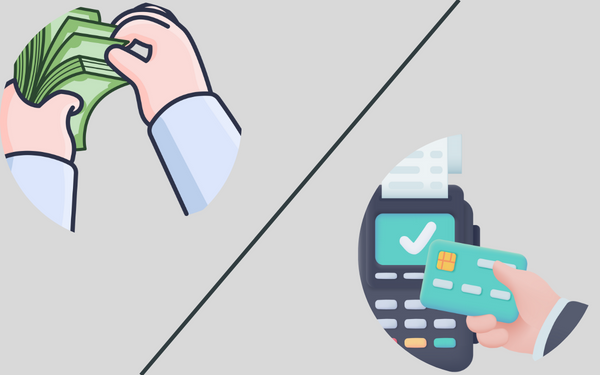Statistics don’t always tell the full story. But if you look at the figures for the proportion of face-to-face transactions handled in cash over the past 10 years, there’s only one conclusion you can draw. Cash is in serious decline.
In 2014, 48% of payments in the UK involved cash. The tipping point had been reached, sure, and card or digital payments – what we collectively call ‘cashless’ – had already become more common. But back then it was a close-run thing.
By 2022, the proportion of payments made in cash had dropped to just 14%. Three quarters of adults now said they used cash only occasionally or rarely.
The precipitous decline of cash has sparked fierce debate in commercial sectors. The trend towards digital payment methods, with contactless taking the lead, has led many to conclude that we are heading towards a cashless economy. In that case, some industry analysts argue, the proactive thing for businesses to do is to embrace the future – go cashless now, get ahead of the curve.
However, there are others who argue that dismissing cash so soon would be a mistake. The decline in cash payments has to be viewed in the context of payment options multiplying overall. There is no such thing as a single ‘cashless’ payment option, but a host of methods including contactless cards, contactless via phone, digital payment services and more. Payment variety is the real trend, and that variety includes cash.
So what are the pros and cons of cashless, and do we even want to embrace a cashless society?
Cashless means convenience
One thing is for certain, we increasingly live in an economy where convenience is king, driven by the experiences and expectations that online and digital technology have created. The rise of cashless payments very much tick that particular box.
The step change has been the evolution of contactless technology. Tap and pay, swipe and go – it’s all about speed, ease and convenience. Contactless payments can be completed in a fraction of the time it takes someone to hand over cash and have their change calculated, or even insert a card into a chip and pin machine and punch in their code.
Contactless payments therefore help to boost customer satisfaction by reducing wait times, and improve overall throughput for the business. Who wouldn’t want to lean into that?
Another consideration is that cashless payment options are much more flexible. It’s much easier to build a self-service kiosk with a card or contactless reader than it is to fit an automated cash teller module. In the case of mobile POS, giving vendors the freedom to get out and about around premises or at events, it means not having to worry about cash boxes or belts.
This leads to a final benefit of cashless payments – security. When all payments are digital, you nullify the risk of cash register theft, and cut out the logistics of transporting large volumes of cash to the bank for deposit via hired security firms.
Cash means choice
Cash may have lost its undisputed role as the king of payments. But that doesn’t mean it is ready to die out completely any time soon. 15 million people in the UK, for example, still say using cash helps them budget. Cash remains a trusted and reliable payment method. It also means access to the economy for people who don’t have a bank account, or struggle to use technology like smartphones.
The major criticism of any push to go completely cashless is that it removes individual choice and marginalises those who prefer to use cash. This has been a hot topic of debate over banks closing local branches, in effect forcing people to use internet or mobile banking.
The question for retailers and hospitality businesses tempted to go cashless is whether the benefits would outweigh the potential loss of customers who, now more than ever, expect to be able to pay the way they choose.




